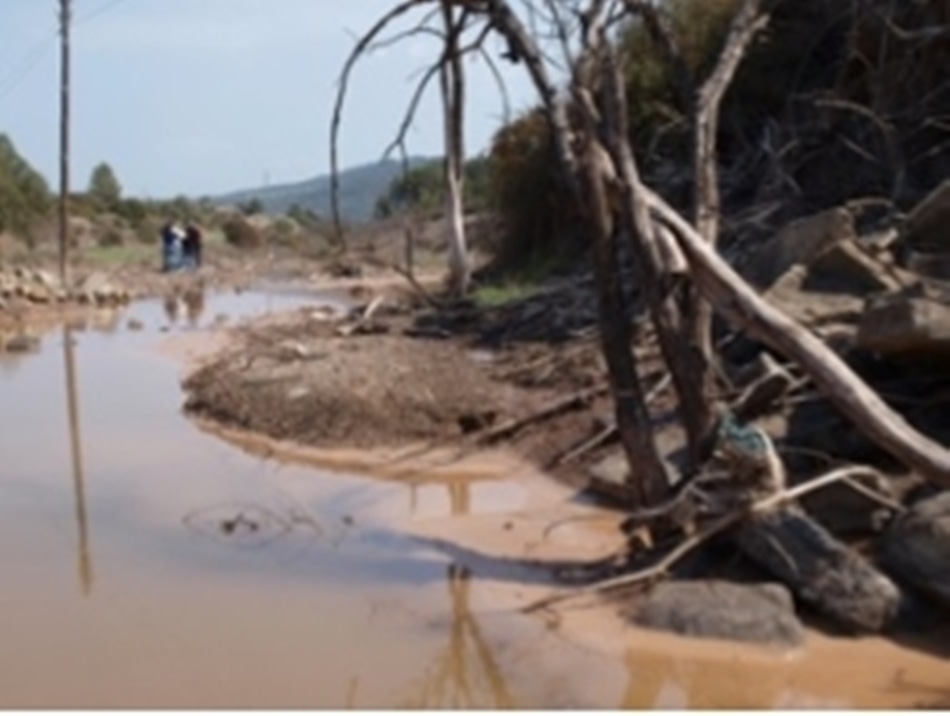Jul 27 2018
Which planet’s areas have more pollutants? What are the most destructive chemical products for the environment? How can people protect natural ecosystems and biodiversity better? Can they detect hard-to-identify toxic products?
 The now study determines the main questions to consider in order to manage sustainably the environmental risks that are related to the chemical products in Europe. (Image credit: Rubén Ladrera, University of La Rioja)
The now study determines the main questions to consider in order to manage sustainably the environmental risks that are related to the chemical products in Europe. (Image credit: Rubén Ladrera, University of La Rioja)
Chemical products that are discarded in the environment as a result of human activity lead to loss of biodiversity, degradation of natural resources and the environment, crises on food safety, and impacts on health.
Now, a new international research determines the 22 critical questions that should be considered to sustainably manage the environmental risks associated with Europe’s chemical products. The study was performed by the expert Miguel Cañedo-Argüelles, member of the Faculty of Biology and the Catalan Water Research Institute (IdRA) as well as the University of Vic – Universitat Central de Catalunya (UVic-UCC).
Reported in the journal Environmental Toxicology and Chemistry, the study aims to create a new guideline – with a more universal and coordinated standpoint – for a number of economic and social sectors in the field of management of environmental as well as chemical products in Europe.
Part of the initiatives by Global Horizon Scanning Project (GHSP), Society of Environmental Toxicology and Chemistry (SETAC), the latest study was conducted to spot the key factors that change the quality of the environment in a number of geographical locations such as Europe, South-America, North-America, Africa and Asia-Pacific. Particularly, the study stems from a 2015 initiative that was undertaken during the SETAC conference in Barcelona, wherein the key heads of certain consultancy groups of the entity discussed important aspects of the environment and chemistry, which were mentioned to over 2000 SETAC members.
Is a more sustainable environmental future possible?
Some of the goals for the UN Agenda 2030 for the Sustainable Development are ending with inequalities and poverty, encouraging education and dignified work, and guarding the environment around the Earth. With a changing vision, the Agenda 2030 signifies a model guideline on environmental, social, and economic sustainability for all member states that participated in September 2015.
The aim of this latest scientific study is to evaluate the interaction between various factors that impact natural ecosystems such as chemical products, environmental degradation, hydrological alterations, and so on. Miquel Cañedo-Argüelles, member of the research group Freshwater Ecology, Hydrology and Management (FEHM) of the UB and the BETA-TECNIO Technological Center of UVic-UCC, states “ecosystems are exposed to many stress factors and scientists analyse those separately due technical restrictions”.
“However, these factors are interacting and this interaction does not result in the mix of individual effects, since there can be synergies or antagonisms”, adds Cañedo-Argüelles, who chaired the consultancy group on freshwater salination during the SETAC conference.
Professor Alistair B.A. Boxall (University of York), one of the main authors in the study, observes that since chemical products in isolation “can result in a simplistic assessment that doesn’t account for the complexity of the real world, the new study highlight’s international scientists' research priorities and our key knowledge gaps when it comes to the risks and impacts of chemicals. The study aims to help focus scientific effort on the questions that really matter and inform decisions about the type of research needed to update policies and regulations”.
Emerging pollutants: new threats for the global environment
The experts say that people will have to identify the ecosystems that have a greater risk of degradation owing to Europe’s chemical pollution, and define which are the top ecosystems to preserve biodiversity. In this case, the possible effect of emerging pollutants has to be known; these pollutants often derive from cosmetics or pharmaceutical products and are not controlled by any specific legislation. Cañedo-Argüelles says, “there are currently about 3,000 drugs in the market that get to the environment, and in most of those cases we do not have much information on their potential impact on biodiversity”.
It is equally critical for the ecotoxicological studies to implement the actual situation of the natural environment to identify the potential response of the ecosystem to pollutants.
Studies on the limit concentration of a certain substance in the environment are usually based on laboratory trials with one or a few species, like the planktonic crustacean Daphnia magna.
But there are many species living in ecosystems and interacting among them. Pollutants affect different species and can alter trophic interactions, so these create complex and unexpected responses in the whole ecosystem which affect the level of populations and communities. Therefore, a good option for future studies would be to combine laboratory trials with the use of mesocosms - artificial ecosystems controlling environmental conditions- and if necessary, carrying field studies out.
Miquel Cañedo-Argüelles
The new study, which involved experts from the IMDEA Water Institute (University of Alcala), the Rovira i Virgili University, and the Hunting Resources Research Institute (IREC-CSIC-UCLM-JCCM), outlines the scenario of upcoming challenges in environmental management at an international scale. In this situation, GHSP is also supporting the newly published study on the state of play in South American countries (Furley et al., 2018), within the area of the initiatives by SETAC “to improve the research effort on the impacts of the chemical products in the environment”, professor Boxall concludes.